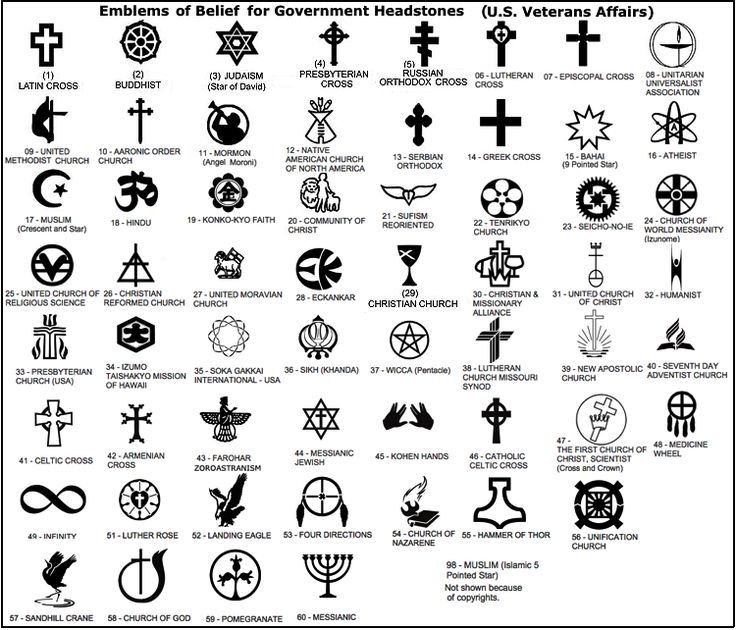This article explores the top 10 religious symbols and their meanings. The symbols include the cross in Christianity, the crescent moon and star in Islam, the Star of David in Judaism, and the Om in Hinduism. The Yin-Yang represents Taoism, the Wheel of Dharma represents Buddhism, the Ankh represents Egyptian ideology, the Menorah represents Judaism, the Ichthys represents early Christianity, and the Khanda represents Sikhism. Religious symbols are crucial in various faiths as they represent the belief system, culture and history associated with a particular religion. They also help people connect to their religion and spirituality.
The Top 10 Religious Symbols and Their Meanings
Religious symbols are a significant part of many people’s faiths. They represent the belief system, culture, and history associated with a particular religion. Here are the top 10 religious symbols and their meanings.
1. Cross
The cross symbolizes Christianity and is one of the most recognized religious symbols worldwide. It represents Jesus’ sacrifice and the forgiveness of sins. The vertical line represents the divine, while the horizontal line represents the earthly world. It also represents the belief in resurrection and eternal life.
2. Crescent Moon and Star
The crescent moon and star are the primary symbols of Islam. They represent the Islamic faith and are often found on flags, structures, and clothing. The crescent moon symbolizes the beginning and end of the month of Ramadan, the Islamic holy month. The star represents hope and guidance, as well as the five pillars of Islam.
3. Star of David
The Star of David is a symbol of Judaism and represents the Jewish identity. It is a six-pointed star that symbolizes the union of God and humanity, and the harmony between physical and spiritual existence. It also represents the tribe of Judah, King David, and the security and protection of the Jewish people.
4. Om
Om is a sacred symbol of Hinduism and is considered the most significant sound in the universe. It represents the three states of the mind: waking, dreaming, and deep sleep. It also represents the Hindu gods Brahma, Vishnu, and Shiva, as well as the universe’s creation, preservation, and destruction.
5. Yin-Yang
The Yin-Yang represents the Taoist belief system and symbolizes the balance between everything in the universe. The black half represents yin or the feminine energy that is dark, passive, and receptive. The white half represents yang, or the masculine energy that is light, active, and creative.
6. Wheel of Dharma
The Wheel of Dharma is the Buddhist symbol that signifies the Buddha’s teaching of the Four Noble Truths. It also represents the Eightfold Path, the three jewels of Buddhism: Buddha, Dharma, and Sangha, and the cycle of life, death, and rebirth.
7. Ankh
The Ankh is an Egyptian symbol that represents eternal life and regeneration. It represents the union of male and female, balance, and the elements of air and water. It is also associated with the goddess Isis, the god Osiris, and the pharaohs.
8. Menorah
The Menorah is a seven-branched lampstand that symbolizes Judaism. It represents the seven days of creation and the seven holy festivals. It also represents the light of knowledge, hope, and peace.
9. Ichthys
The Ichthys is a symbol of Christianity and represents Jesus Christ. It is commonly seen as a fish symbol and represents the early Christians’ secret code during times of persecution. The letters in the symbol spell out the Greek word for fish (ΙΧΘΥΣ).
10. Khanda
The Khanda is a symbol of Sikhism and represents the religion’s core beliefs. The double-edged sword represents spiritual authority, and the circle represents unity and oneness with God. The two swords on the sides of the khanda represent justice and self-defense.
In conclusion, religious symbols are essential in various faiths and represent their core beliefs and values. These symbols hold significant meanings and help people connect to their religion and spirituality.
